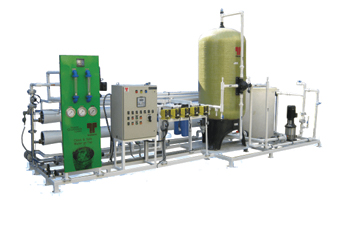
-
-
CALL US NOW
+91 78600 24711

The corrosion and deposited deposits are two factors that play a significant role in the destabilisation of steam boilers and turbines. These factors not only decrease the efficiency of the steam boiler and turbine, resulting in a reduced output but also reduces the life of the equipment.
Why Steam and Water Analysis?
The purity of steam and boiler feed water is crucial in any steam-powered plant, especially for steam turbines, steam boilers, super heaters, condensers, and other steam-powered equipment.
Impurities relating to parameters like pH, conductivity and dissolved oxygen as well as silica, sodium and phosphate can cause equipment failures or shutdowns. This steam equipment is slowly eroded, resulting in turbine failures/boiler shutdowns and even permanent damage.
Unplanned shutdowns can have a high cost. Over 50% of unplanned shutdowns are due to insufficient analysis/control of impurities, resulting in corrosion and deposition. On-line steam and water analyses are essential to prevent equipment damage due to corrosion and scaling.
What is SWAS
SWAS stands for Steam and Water Analysis System, which measures the quality and quantity of steam in plants. A good SWAS monitors contaminants such as pH, conductivity and dissolved oxygen. It also helps maintain a healthy plant operation by adjusting the parameters of process steam. Plants with SWAS that are well-engineered and well-maintained work more efficiently, with over 90% uptime.
What is its use?
It is now quite common to monitor boiler parameters such as pH, conductivity and silica. These parameters are monitored by different services, such as DM plants, CEP discharges, dearators, feed water to economisers, boiler drums, superheaters, condensers, etc. SWAS packages are designed scientifically to ensure that samples are properly prepared before being sent on to analysers. Sample conditioning takes place in the sampling system while the analysis is performed in the analyzer panel.
How do Steam and Water Analysis Systems work?
The Steam and Water Analysis System, also known as SWAS, has two sections: the wet section (also called wet panel or rack) and the dry portion (also called dry panel or rack). In the wet section, samples are prepared for feeding to the analyzer. Samples at the tapping points are extremely hot and under high pressure. They cannot be directly transferred to the analyser because the sensor is not able to handle high temperatures and pressure. The samples are then conditioned according to the ASME PTC 1911 -2008 standard.
Sample Conditioning
– The sample is cooled by the cooling water from the plant using the DHx sample cooler. It is important to select the sample cooler coil material based on the quality of cooling water.
– After the temperature is reduced of the sample, it is transferred to a high-pressure sample reducer (rod in tube type for pressures above 35 kg/cm2 and needle valve reducers for lower pressures).
– After reducing the pressure, the sample is moved to a blowdown valve to be blown down during startup or after a long shutdown to ensure that clean samples are fed into the sensor of the analyser.
– After the sample has been transferred to a second DHx sample cooler, it is further cooled with a chiller package that supplies chilled water for cooling.
– After the sample has been transferred to the temperature protection device, the sample flow is stopped to protect the sensor of the analyser. The shut device must have a manual reset function in accordance with ASME PTC 1911 standard. The contact output may also be connected to an automated control system.
After the sample has been transferred, the flow is adjusted by the user to meet the requirements of the sensor. This is used in conjunction with a back-pressure regulator to ensure a constant zone of pressure across the sensor.
– After completing all the steps, the sample will be sent to the analyzer.
The thermodynamic Boiler Solutions
Thermodynamic Boiler provides complete integrated sample analysis and conditioning systems, which include on-line analysers and conditioning equipment. These systems are supported by a dual expertise in steam technology and control instrumentation, and can cater to even the most complex processes.
The company manufactures and supplies all the essential components for the thermodynamic boiler, such as the Isolation Valve (Sample Cooler), Pressure Reducer (High Temperature Protection Valve), Back pressure regulators (High pressure stop valves), High pressure stop vales, and even the Chillers' pH and Conductivity Analyzer.
Sample Isolation & Blowdown Valve
Thermodynamic boiler sample isolation valves, blowdown valves and other valves are designed to withstand high temperatures and pressures at ultra-supercritical pressures for power boilers. These valves meet the ASME B16.34/EN 12516 design requirements for low emissions and to meet the maximum fugitive level of 100 ppm.
High Temperature Safety Stop-Off Valve With Manual Reset
The thermodynamic Boiler, a mechanical device that protects against temperature overshoot when the SWAS is in operation, ensures this protection. It prevents high-temperature samples from damaging the expensive and delicate analyzer sensors.
Back Pressure Regulator
The thermodynamic Boiler Back Pressure Regulator (BPR), ensures that priority samples flow to analyzers.
It operates in the opposite way to a pressure regulator. It maintains constant pressure upstream, regardless of fluctuations. The BPR provides extremely stable conditions that result in reliable, accurate and stable performances for the analyzers.
Four-wire Dual Channel/Multi Parameter Transmitter
The Boiler Aqua4Trans 4 wire transmitter is a versatile platform that can be used to monitor various parameters. It provides online monitoring of water and processes. It is available in single and dual channel measurements for pH, conductivity ORP, temperature and TDS. The flexible combination options are suitable for both field and panel mounting. It has several unique features that cover the requirements of nearly every industrial process in water chemistry.